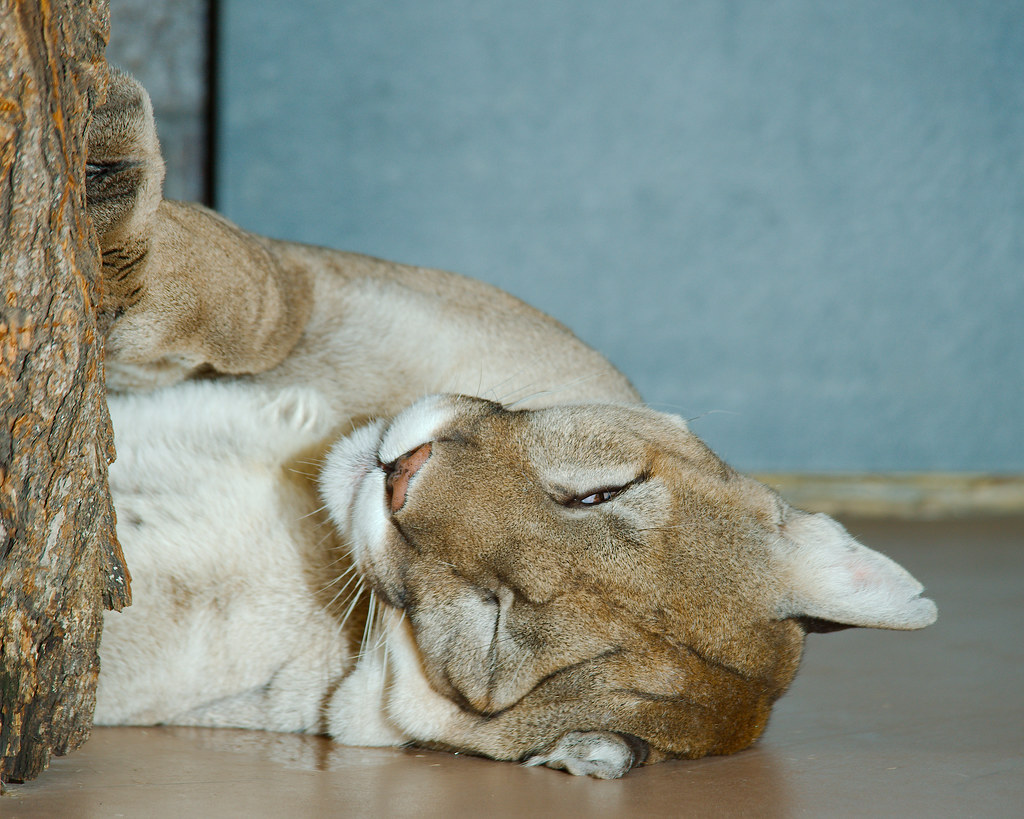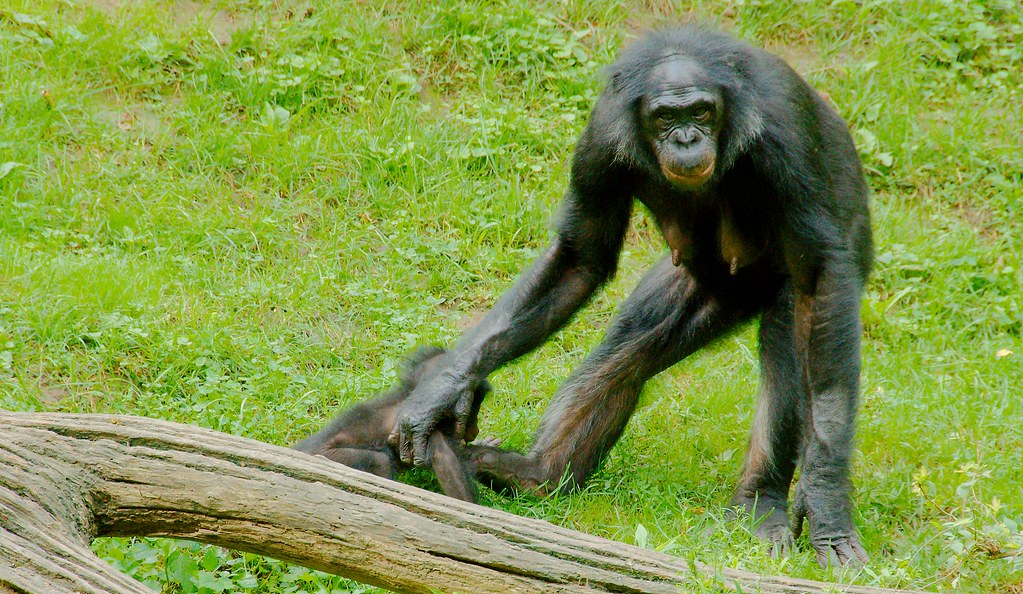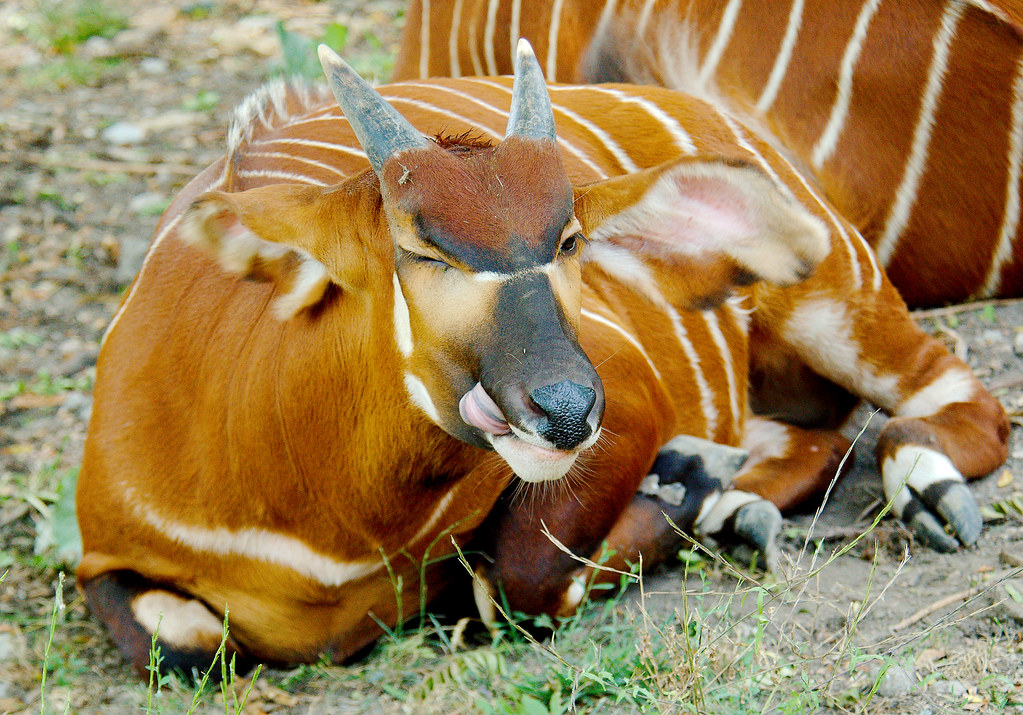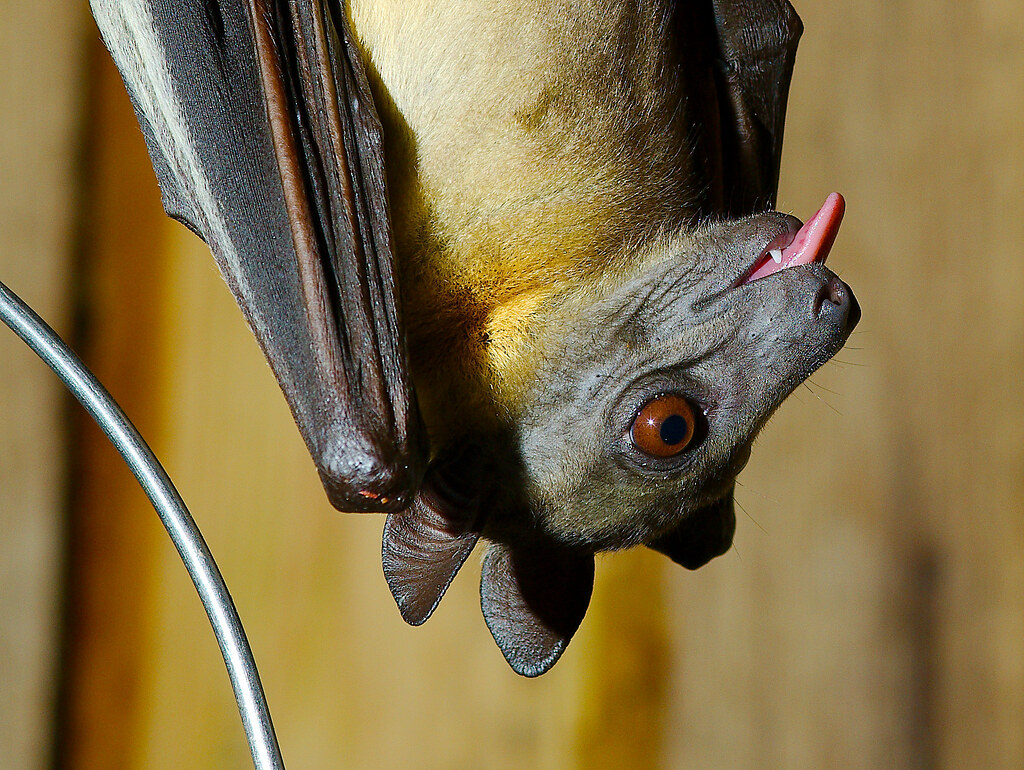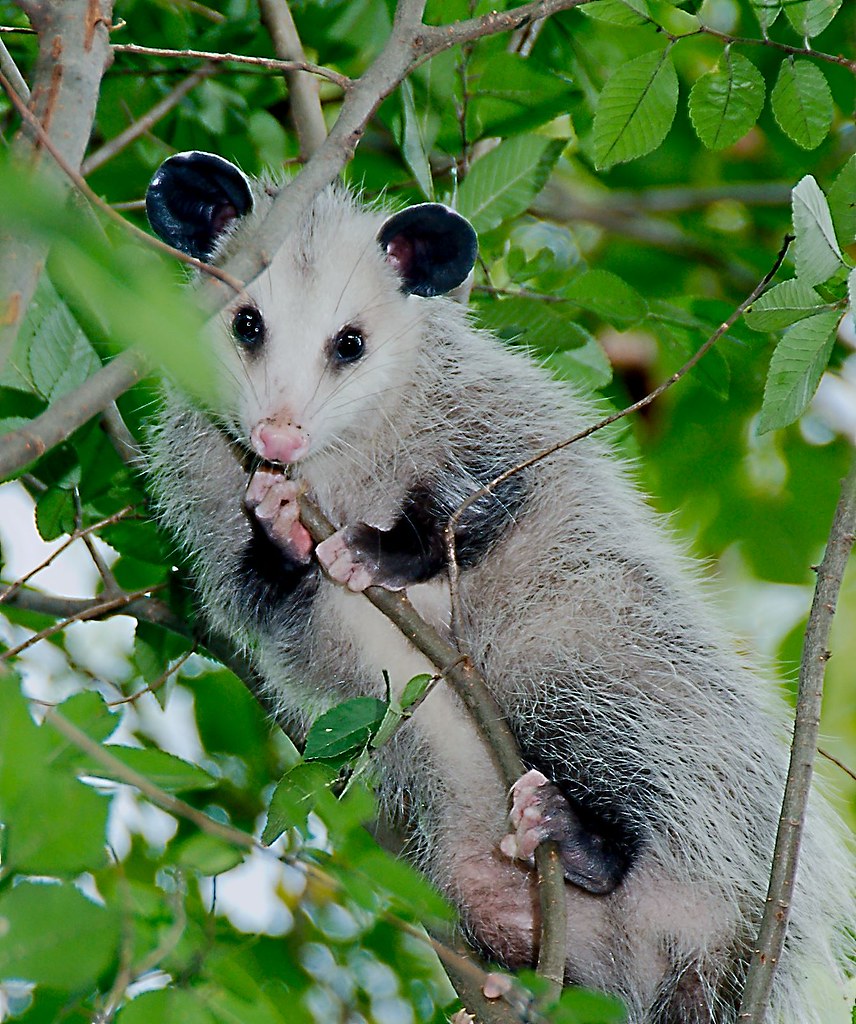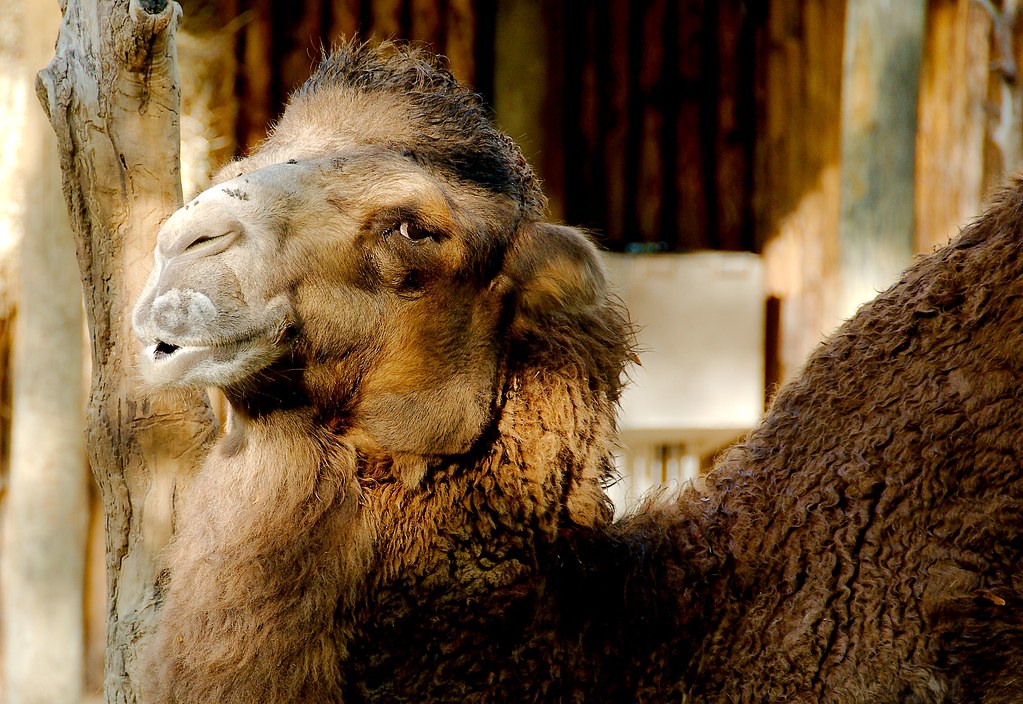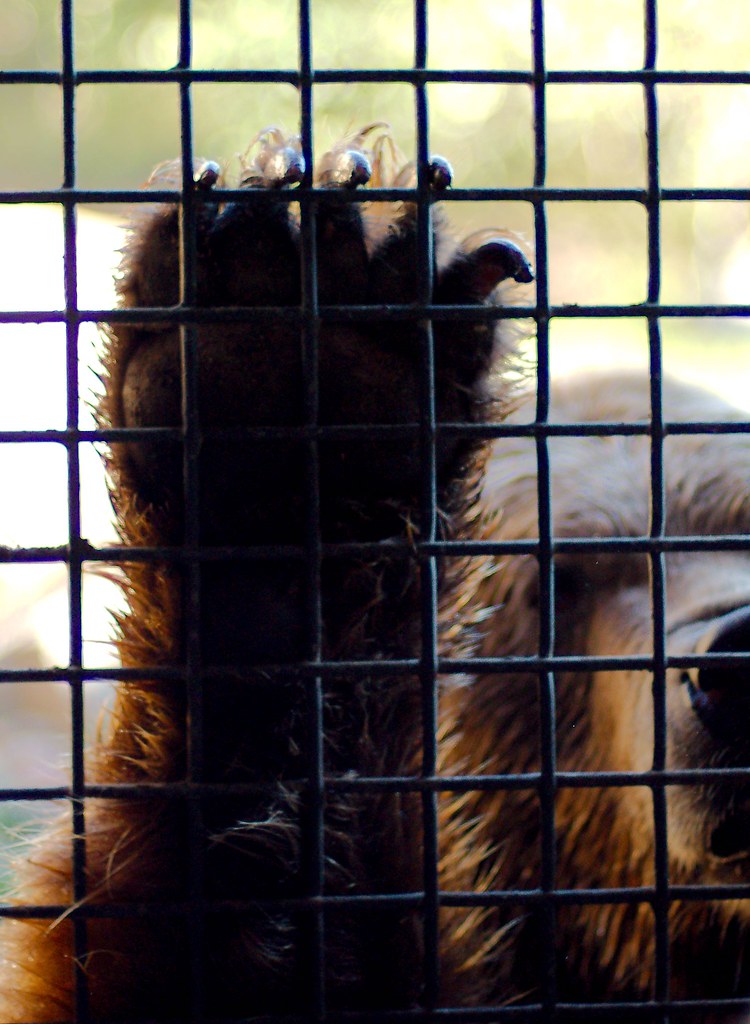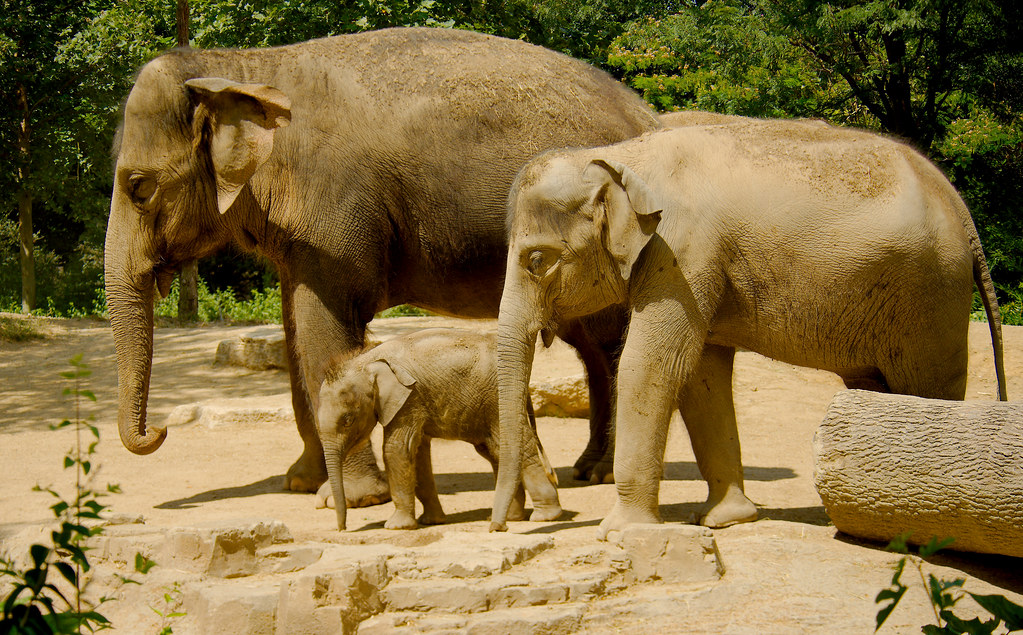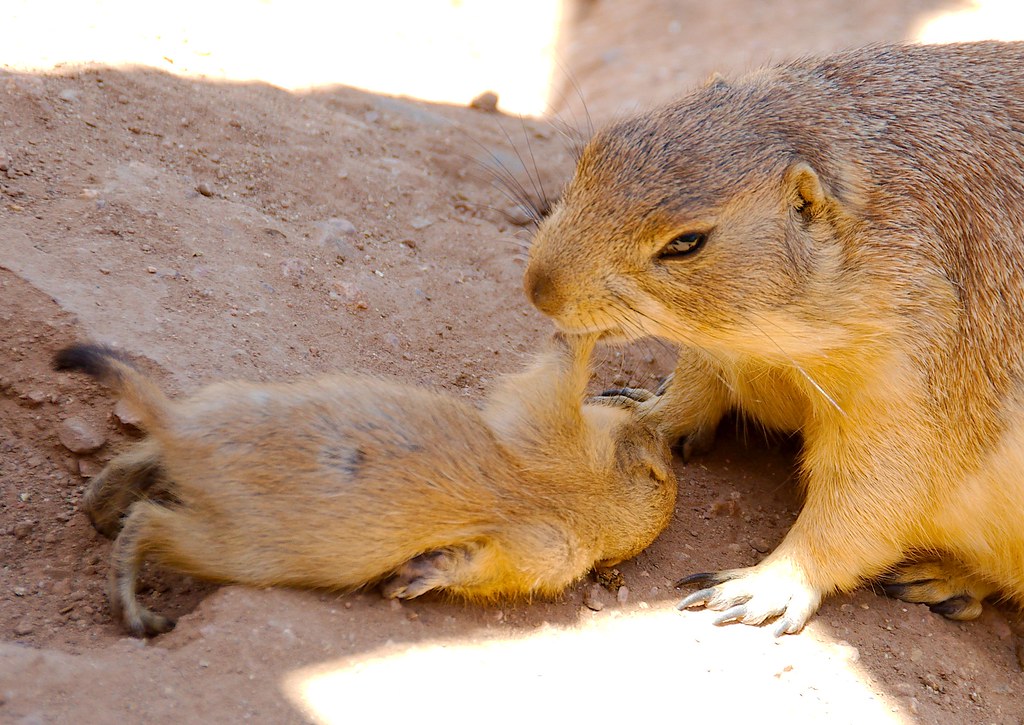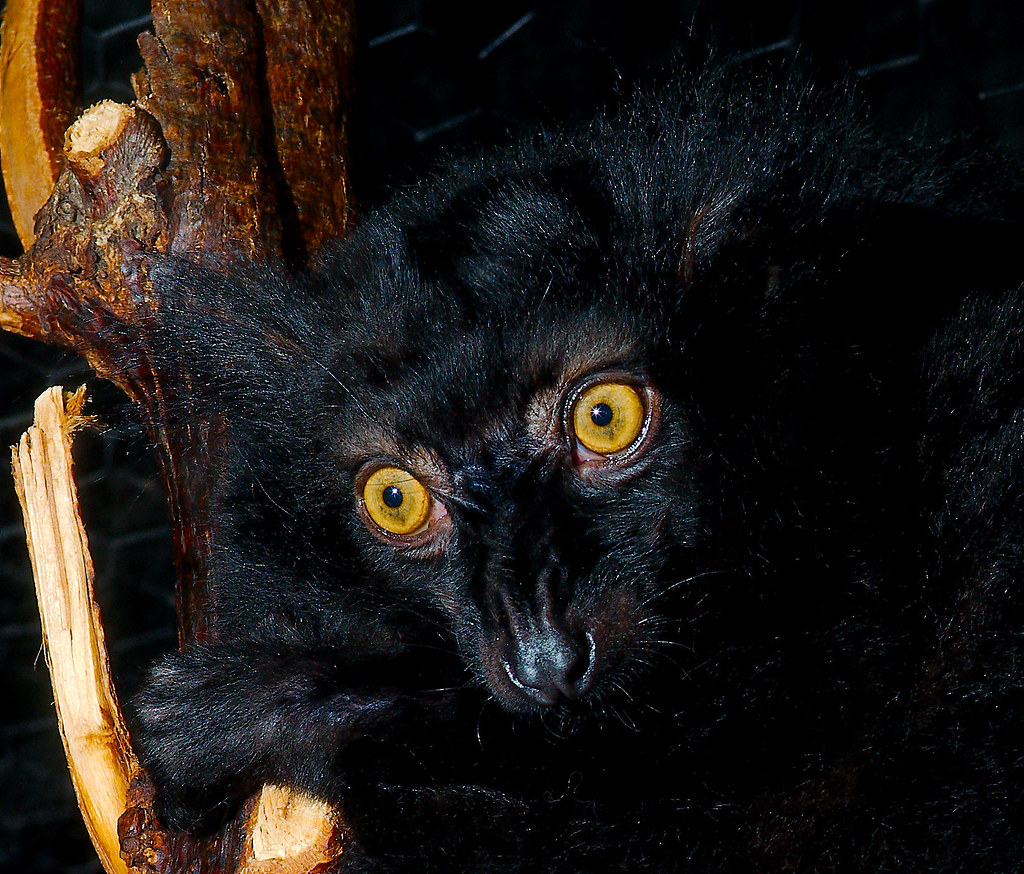
Black lemur just wishes everyone could get along.
And pie. Some pie would be nice too.
Category Archives: Mammal
Cougar (Puma concolor)
Chimpanzee
Bongo (Tragelaphus eurycerus)
Sumatran Rhinoceros (Dicerorhinus sumatrensis)
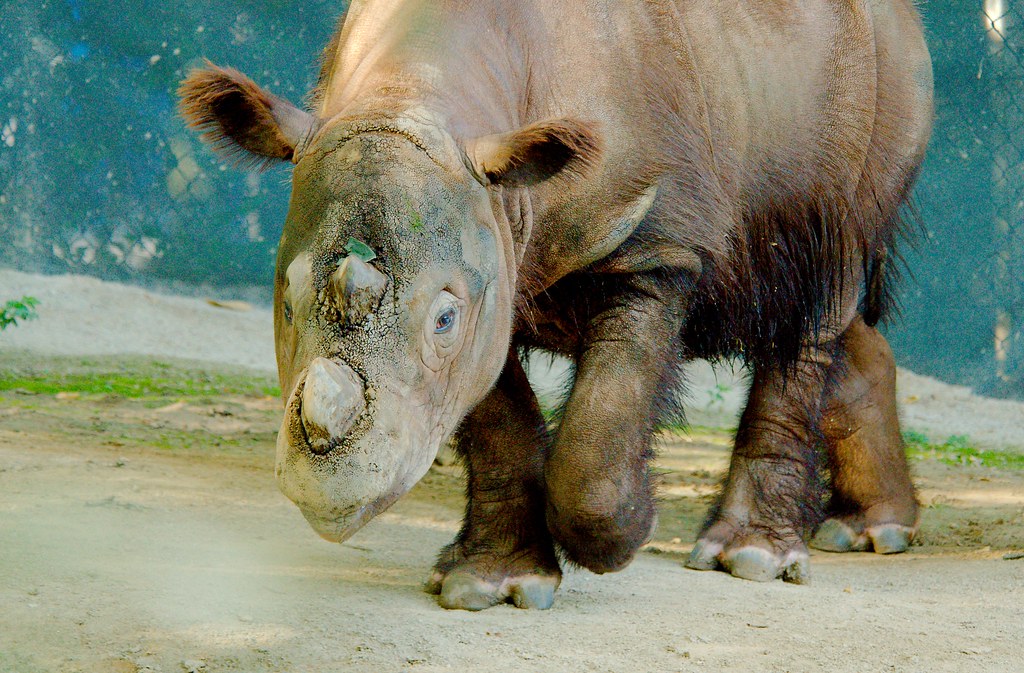
There are fewer than 100 Sumatran rhinoceroses in the world. All but one of them are in Sumatra. This one is in the Cincinnati zoo. That should seem weird to you.
You know what else is weird? Only two Sumatran rhinoceroses have been born in the last fifteen years. You know where? The Cincinnati zoo.
That’s why it’s sometimes better to keep the animals in captivity. Not always, of course, but in this case, yes. Without a doubt.
Potto (Perodictus potto)
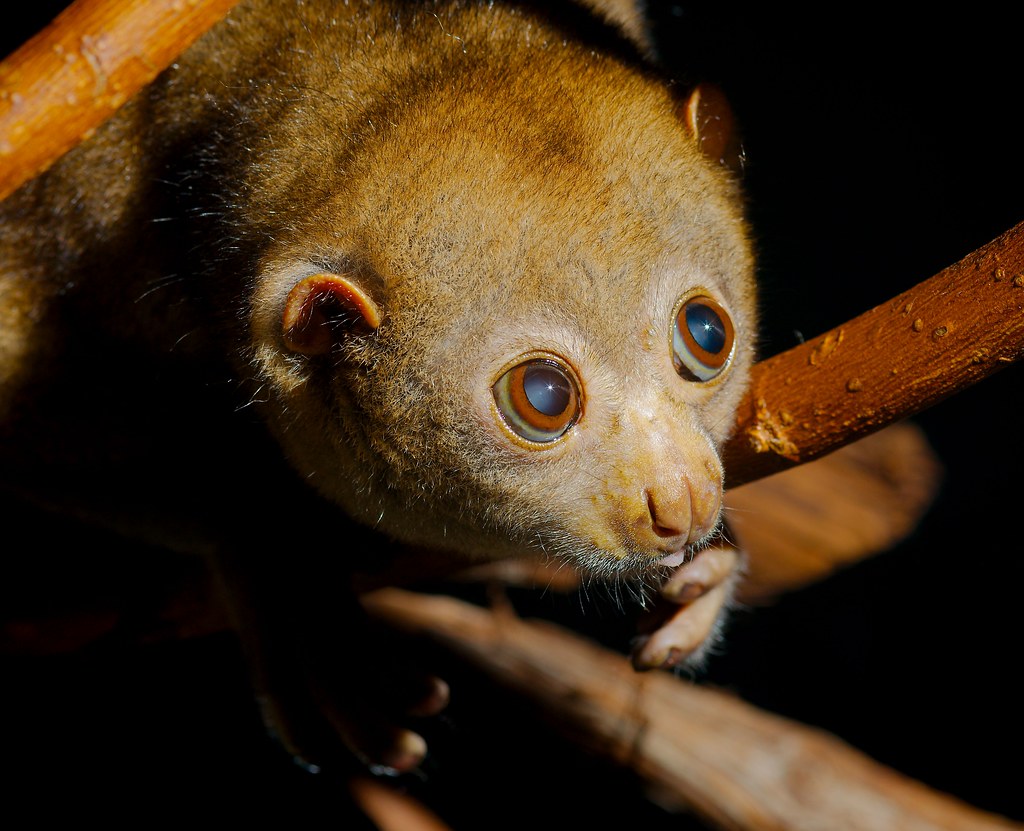
Taking photos of nocturnal animals is tricky. First of all, it’s hard to focus in the dark. Second, if they’re adapted to the dark, it’s somewhat cruel to hit them with a flurry of bright flashes. Now, a lot of zoo animals are used to that, because the average zoo attendee isn’t going to have the first clue how to manage their flash power. Still, I think it’s best to minimize impact where you can.
To get this shot (and shots like it), you need an animal that doesn’t move quickly. Slow movers, like this potto, are best, but even moderate movers work well. Then you set the camera to as wide an aperture as you can get away with. I wanted the eye, ear and nose in focus, so I chose 6.7. I could have gone to 8, which is more common for this sort of work, but I’d have to boost the flash a lot and I wasn’t comfortable with that.
Then, I set the camera on the tripod and do a basic focus. This will not be ideal, but it’ll be close enough for the next step. Then, you can figure out where you want the light to come from. I wanted it up and to the right, as that is a pretty classic position and won’t look weird (weird photos will come later). Then set the flash to its lowest power and take a shot. This will tell you how much brighter you need *OR* how much to boost the ISO. If you increase the ISO setting on the camera, you’ll get more noise but you need less light. On mine, any shot between 100 and 400 ISO looks about the same, so that’s the range I work in here. Once ISO is as high as you’re comfortable, you boost the flash power until the photo is balanced enough. On modern cameras, you can under-expose a bit and fix that in post. This gets you the bare minimum light level you need, maximizing kindness to the animal while still getting the shot.
(Some may argue that it’s unkind to take a photo at all. I can understand that point, but really, without photos, people don’t know what they’re protecting, so I think it’s a net gain.)
Now you need to handle focus. Set a pocket flashlight and set it to as wide a beam as possible. That way, you can get just the edge of the beam on the animal. This slight increase in light can be set so it never touches the animal’s eyes but provides enough for autofocus to lock on. Then you can lock focus, move the light away quickly and take the photo with flash. The slower the animal is, the more likely it is to remain in focus during this time. Using a remote cord release in the hand holding the flash unit can help maximize your success … and make you look really weird to the other zoo people.
One word of caution. Most zookeepers are very understanding when you explain what you’re doing and why, but I am very careful never to use the flashlight trick when kids are around. They’re unlikely to understand the care involved and no one wants them to think that shining flashlights into the exhibits is a good idea.
And now you know.
Jaguar (Panthera onca)
Straw-coloured Fruit Bat
Cactus Mouse (Peromyscus eremicus)
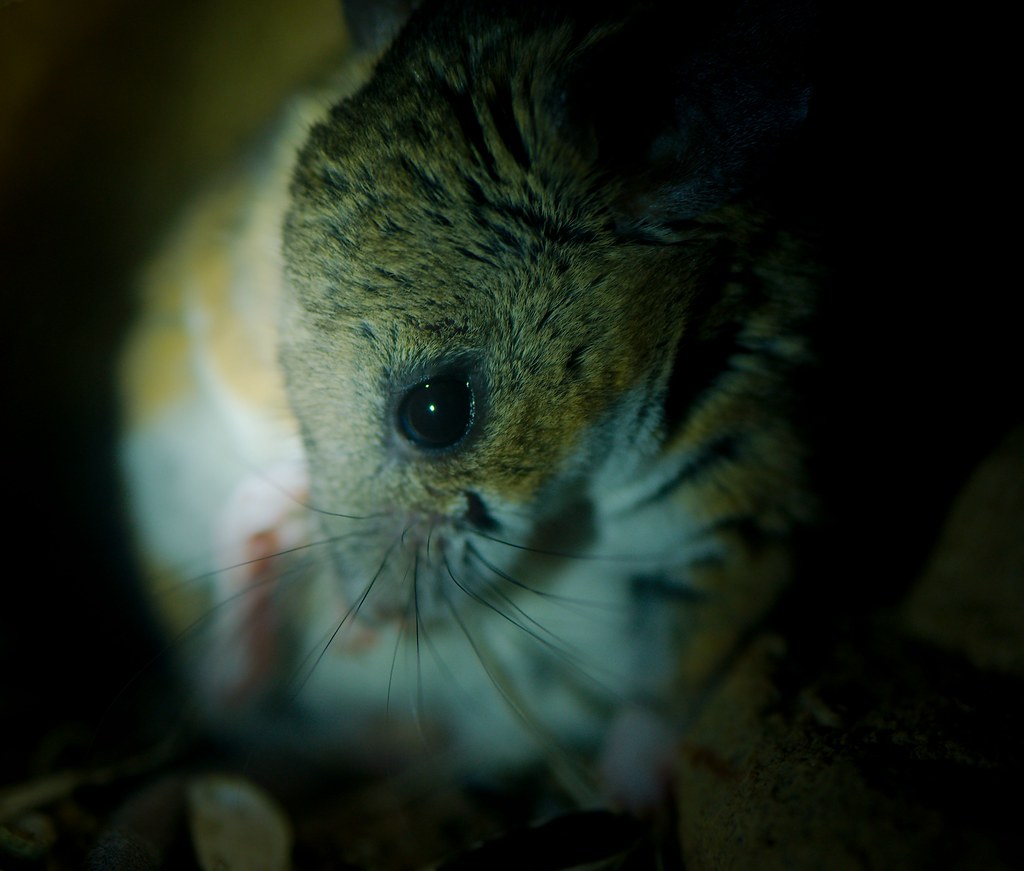
This is not a great photo, for which I apologize. It is, however, illustrative of a common difficulty I face when doing my photos. This mouse is nocturnal. While fairly abundant (most rodents are doing OK), unless you like to go out in the desert and either trap them or destroy cactus to get to them, you’ll never see one. I did see some desert rats, but they move much too fast in very low light to get a photo. So this is the best you can get.
Nocturnal exhibits are tricky. I generally try to avoid flash except at the very lowest power (and for highly sensitive animals, no flash at all). However, it’s often too dark to even focus. So, to get a shot, you have two choices. You can either go for a narrow aperture to maximize your depth of field (how much of the animal is in focus) and really blast it with light, or you can open the lens up, which makes the focus plane very narrow and go with little light. Blasting an animal with light is potentially cruel to the animal (depending on how their eyes or eye-like features are constructed), can stun it into non-normal behavior (making the photo less interesting) and, in zoos, cause a lot of glass bounce. If you take the other approach, focus can be hard, as you’re not working with much light either to begin or end.
In this case, I used a flashlight technique. I used a flashlight on low power, in a glancing orientation so it didn’t hit the mouse’s eyes, to set the focus on the camera (on a tripod). Then, I set the camera to take several photos in rapid succession, and just swept the flashlight beam across the mouse fairly quickly. Then, it’s just a matter of choosing the best image.
It may not be the world’s best photo of a mouse, or even of a cactus mouse. I don’t think it stands on its own (hence this long-winded explanation). However, I think it captures the intimacy of the burrow without hurting the mouse, which was the core goal.
Virginia Opossum (Didelphis virginiana)
It was senior day at the zoo, by which I mean, the seniors from the local high school were forced to go to the zoo for their Biology class. As I was taking this photo, three young men walked up. Two of them were white, one was African American. They were all dressed in what suburban people call “urban”, but what I am led to believe that urban people call “clothes”. Their pants were loose, they had over-sized sneakers, and everything was fairly worn. They didn’t seem to want to be there.
One of them saw this critter in the tree and looked at the sign. He pointed, and said to his friends “That ain’t a red panda.” Another said “No, it ain’t.” Then the African American guy looked at it and at his friends and said “I believe that is an opossum.”
Then, as his friends stared at him, he said. “Well excuse me for speaking English!” Then they laughed and walked away together.
And that is why you shouldn’t pre-judge people.
Aardwolf (Proteles cristatus)
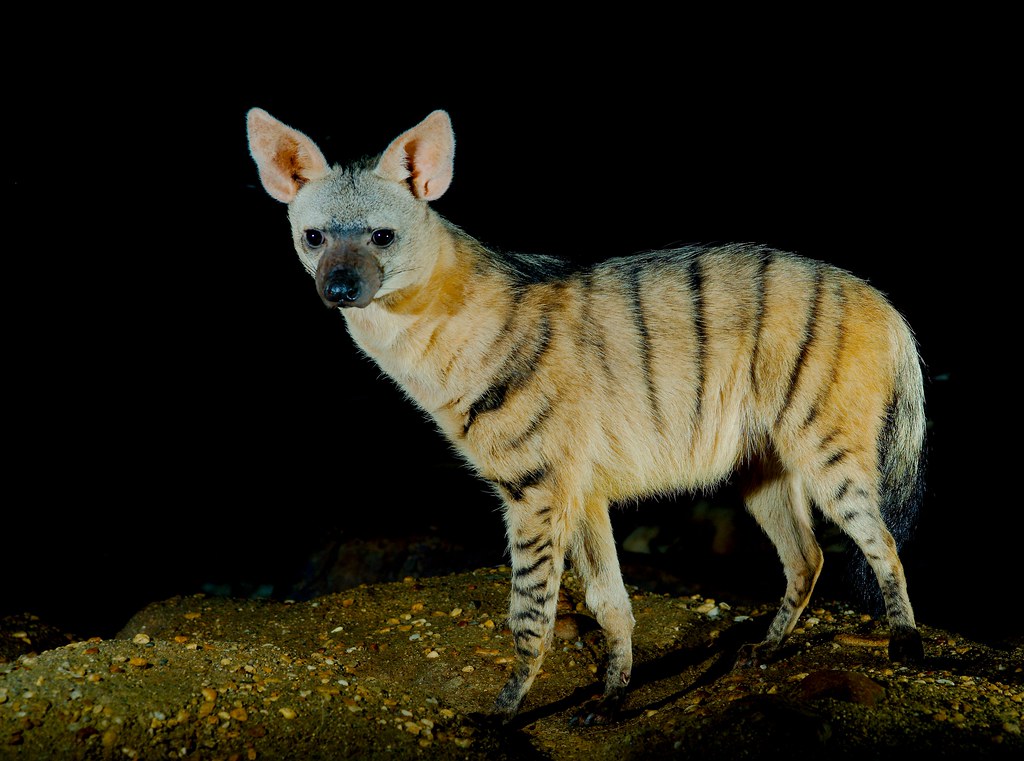
It’s time for another game of … Really? Are you sure?
To play this game, take a close look at this photo. Look at the large ears, well suited to listening. Look at the thin legs and paws, that could be used to make rapid turns while running quickly. Look at the stripes, often seen in stalk-and-ambush predators.
Give yourself at least 30 seconds to look at the photo.
Now ask yourself … “What does the aardwolf eat?”
Now Google it.
Thank you for playing this installment of Really? Are you sure?
Hope to see you next time.
Fennec Fox (Vulpes zerda)

The Fennec Fox is a difficult animal to photograph. They’re rarely on exhibit and, when they are, they like to sleep in a burrow or, in a heap in the back of their enclosure. I’ve taken many a photo of a big ball-o-fox and they always just turn out a bit fuzzy. For this shot, several things had to happen. First of all, I had to be a member of the Phoenix Zoo, because members get in an hour early. This means it’s an hour before kids arrive and bang on the glass, which sends the foxes underground. (If you have kids, don’t let them bang on the glass. If you are a kid, don’t bang on the glass. It’s not fun for anyone.)
Then, the light had to be just right. A fox that’s in shadow isn’t going to come out as nicely and one that’s half in/half out isn’t going to come out at all. Finally, you have to not have any obstacles in the way. This is particularly hard at zoos, because your positioning is often quite limited. To get this shot, I had to use my tripod to position the camera at the very bottom of the glass, focus through a bunch of branches and take the picture. After getting there, and getting this shot, the fox got up and walked away. I had about three minutes to work with, and had I not visited the zoo previously, would never have known the constraints ahead of time and couldn’t have made it.
It was a lot of work, but I think the ears make it worth it. Such awesome ears.
Bactrian camel (Camelus bactrianus)
Bat Eared Fox (Otocyon megalotis)
There are some mistakes that haunt you. Hers was from fifty years ago and there were times when a memory would stir unbidden. — A chair askew. A spoon resting in her hand just the right way. A particular knot of string.
One look and her mind would be yanked to a different time. She spent decades excusing herself. She told herself she was young, that she’d been weak. But the truth was nothing more than that she had chosen poorly.
Her “friend” … how she laughed to think that way today … had dared her. A few years older than she was, beautiful and strong, she had wanted to impress. Even today, she didn’t truly know if there was more behind the act than a mere desire to appear as more than she was. Could it have been love? lust? She didn’t know. All she knew was that, in her youth, whatever she had felt had overridden her fear.
She remembered striding confidently into the glade, the muscles in her back pulsating, countering the tremble she felt shooting up her spine. After leaping the fence, she’d used her thin knife to quick lifted the latch and slip inside. The cottage had smelled wonderful. She’d never been able to forget that smell. No matter what she cooked, nothing came close to the richness of the oats, cinnamon and vanilla she had smelled. Such a simple dish, it shouldn’t have been so intoxicating. Even knowing what she did today, were she to be there again, she knew she wouldn’t be able to resist that smell.
She had found that she could move the smallest chair and, as if in a trance, had climbed and peered into the cauldron. She remembered dipping a spoon, had she taken it off the table? She didn’t remember. Nothing had mattered but that smell. She’d taken a bite. Then another. And another. All sense of time lost.
The next thing she remembered was hearing the squeak of the gate and she knew she had to leave. She’d leapt from the chair and ran to the bedroom to grab the two largest quilts.
Those damn quilts.
Everyone in the village spoke of those quilts in hushed whispers. Finer than silk, lighter than air, yet warmer than the sun itself, they were magnificent. Though each quilt was older than the village itself, many elders spoke of the rituals of renewal — the late winter awakening, the harvest of the year’s first spiderwebs, carefully cured and used to haul down the lazy clouds of summer, the fall spent filling the quilted pockets, one by one and with the greatest of care, with the memory of summer breezes. All done so the three could sleep the winter away and, when the first crocuses thrust through the icy crust of the melting snow, wake from their slumber to begin the process all over again.
The quilts were everything she’d heard and, lifting one, surprisingly light, bundle in each hand, she had made it as far as the window just as the door opened. She’d been unable to risk a glance backwards and for less than a second, but what felt like more than an hour, she’d looked into those three pairs of dark, gleaming eyes. Out of the corner of her eye she’d seen the chair bounce off the cauldron and fall into the fire, scattering embers all around.
She had run into the woods, leaving the smoking cottage ever further behind as the flames grew brighter behind her.
Her friend had been astonished at the quilt, never believing that she’d actually go through with it. That night, she learned the worth of friendship when her friend left town, trading her quilt to a wandering wizard in exchange for everlasting beauty and a chance at the hand of prince.
She’d kept hers in the bottom of a small chest, never shown to anyone — her parents, her husband, not even her children. It was her refuge. When completely alone, she’d sometimes take it out, deeply inhale, and remember a late afternoon rain on young drying straw, the gleam of summer sun peaking through the parting clouds as locusts sang in the trees.
That quilt, some months her only refuge, could not balm the pain of her the memory of that next day. She’d learned of her friend’s departure when she wasn’t among the villagers standing around the burnt cottage in the morning. None of the villagers had been able to adequately explain what had happened, but every one of them commented on the three sets of ashy footprints leading to the mountains, vanishing into the snow.
Nothing, though, matched her memory of that day, months later, when she found the cave and had stumbled across the single set of tiny footprints and had glimpsed the two frozen bodies within.
Out of fear, she’d accepted an offer and became the wife of a traveling tinkerer. Though she’d not even been invited to her friend’s royal wedding, her late husband had eventually become her prince … much of the time anyway. Now though, she was too old to travel and her children had lives of their own. They still visited sometimes and were even kind enough to humor her irrational fears, fixed up the house so she felt safe. Though, today, the cold wind was beginning to blow and she was losing herself in memories.
So lost that when she heard the scratching she just opened the inner door, unthinking.
Ground Squirrel
Sun Bear
Elephants
Prairie Dog performing Macbeth
Siamang
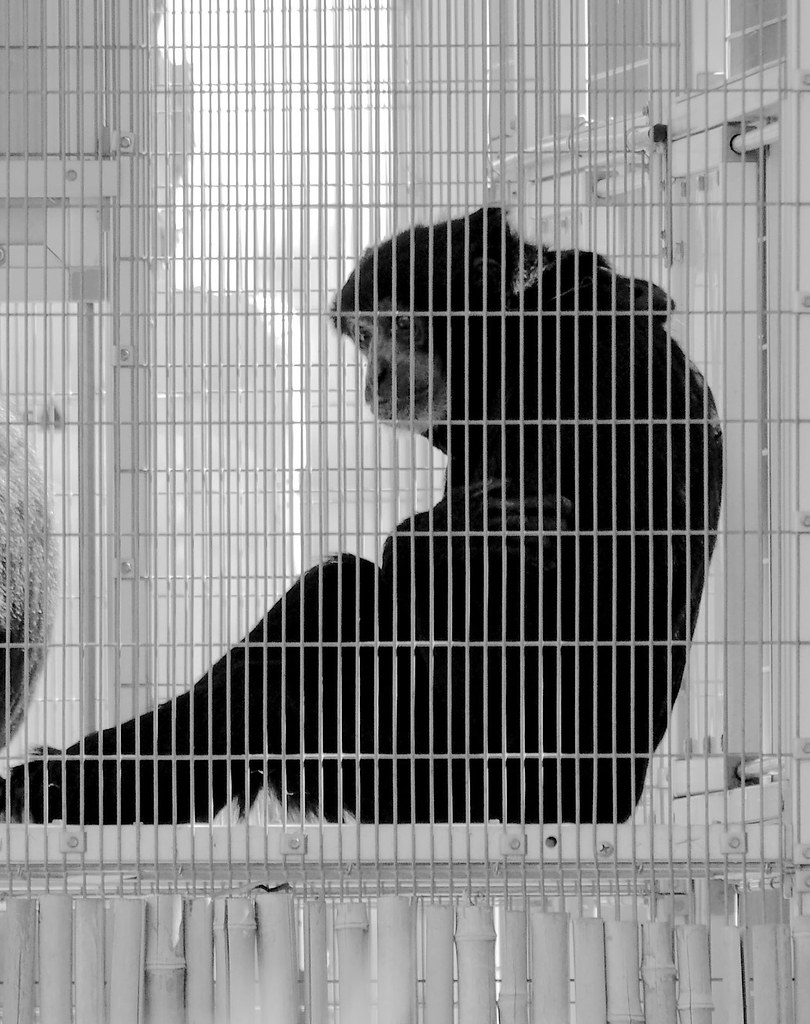
This is one of those a classic “animals in zoos are sad” photos. Apes and monkeys are easy for humans to empathize with, and seeing one in a cage is hard to see without thinking of how it would feel for ourselves to be in a similar situation. It is very easy for articles to use photographs like this to illustrate their “get rid of all the zoos” articles.
This siamang was in the cage for ten whole minutes. They are trained to go into the cage so the keeper can get onto the island and keep things clean. I watched him row is boat over, reward the ape for getting into the cage, then walk the island picking up the litter that had fallen into the water and washed up to the shore. Before and after the visit, the siamangs were happily cavorting on their ropes and swinging all over the island. It would be nice to see them living happily in their native forests, but so long as humans continue to consume palm oil and coffee, that will not be an option.
For now, they’re living as happy lives as the world allows. Much like the rest of us, really.
